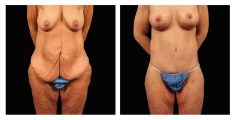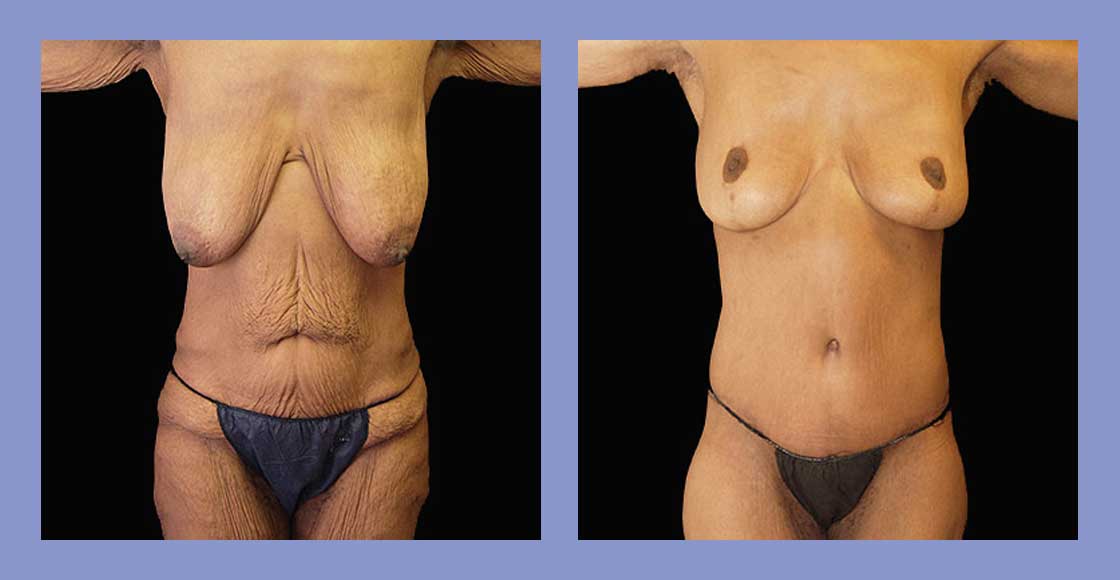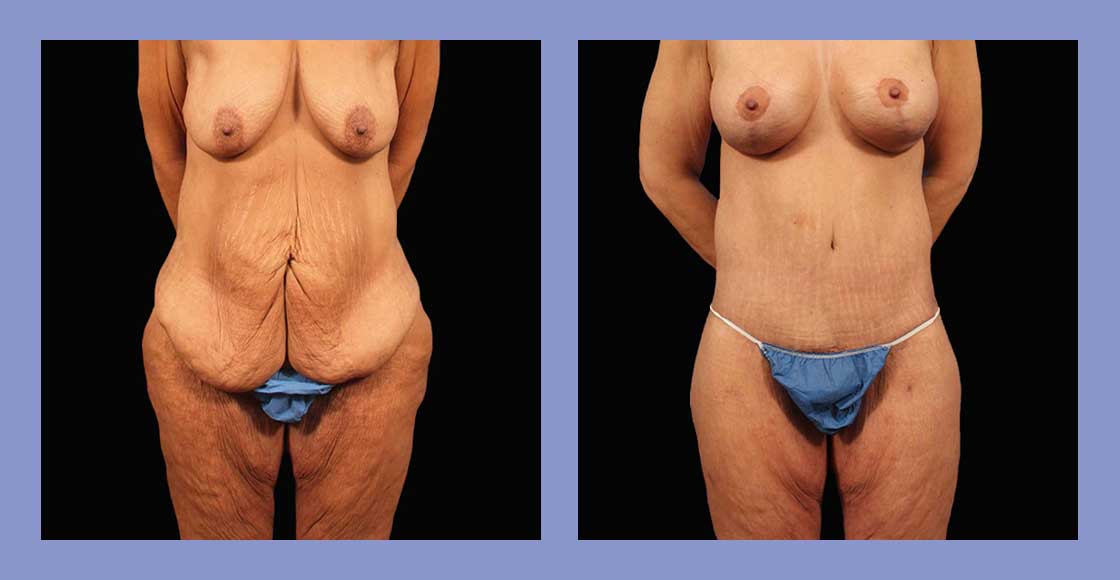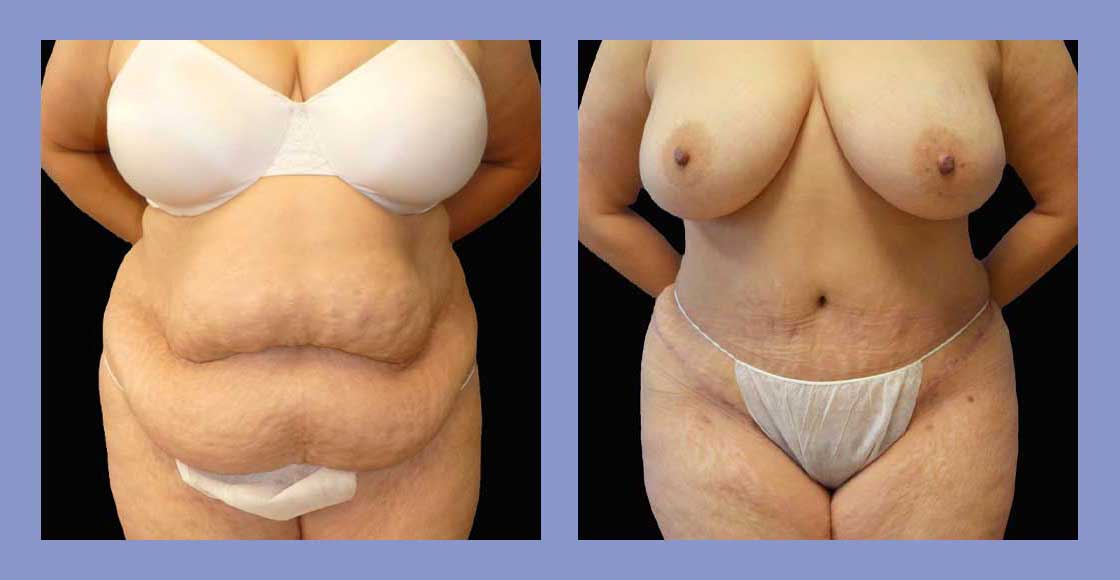— Verve Patient

Post Weight Loss Body Contouring
Quick Links
What is Post Weight Loss Body Contouring?
- This is a general term used to describe multiple procedures that will be needed to sculpt and tailor loose and hanging skin after you have lost significant weight.
- This doesn’t describe one single procedure, rather the process to accomplish your goal physique.
- Many patients undergo a combination of procedures such as: abdominoplasty, breast lift, thigh lift, buttock lift, arm lift, facelift, & liposuction. Your procedures will be customized to you to achieve your desired results.
Who Is a Good Candidate?
- You have lost a large amount of weight through bariatric surgery (such as gastric bypass or lap band surgery), diet and exercise or post pregnancy.
- You have folds of loose/inelastic skin that is resistant to reduction even with diet or exercise.
- You are unhappy with sagging skin in multiple areas, including the abdomen, back, thighs, arms, breasts, face and neck. This skin could cause painful chafing/rashes, make it difficult to fit into clothing and affect self-esteem and confidence.
- Patients who are good candidates also are those who have a
- Desire for a tighter, firmer body.
- Sagging skin following an extreme loss in weight or bariatric surgery.
- Hanging skin following extreme weight loss.
- Discomfort from tucking excess skin into clothing.
- You should be at or close to your ideal weight, with a BMI less than 35.
- You should be at a stable weight for 6 months.
- The best candidates are non-smokers. Smoking increases the chance of complications including impairment in wound healing.
- You should be in good health.
- You need to be dedicated to enduring the entire process. Often full body contouring occurs over multiple surgeries spaced 3-6 months apart. It takes mental and physical dedication and determination to remain committed to the entire process, but we promise, in the end it will be worth it.
The Procedures
Lower body lift
Tightens loose skin around the lower body to reshape the abdomen, outer thighs, buttocks and hips. The procedure is performed through an incision around the back of the hips to the front of the thighs.
Arm lift
Removes excess skin and fat for a slimmer and more toned upper arm contour. Arm lift is performed through an incision placed on the inside or back of the arm.
Inner thigh lift
Removes extra skin and fat for leaner and more proportional-looking thighs. The surgical incisions are made on the inner, upper thigh (or in the groin crease).
Breast lift
Removes excess skin and reshapes the breast mound higher on the chest wall. Some women opt to combine breast lift with breast augmentation for larger breasts or breast reduction for smaller breasts.
Abdominoplasty
Removes excess skin from the lower abdomen and repairs weakened/separated muscles to create a flatter abdominal profile. The incision is made right above the pubic hairline and runs from hipbone to hipbone.
Liposuction
Used to improve contour and fat reduction in stubborn areas despite diet and exercise.
Facelift
Used to remove excess skin along the neck and jowls that is common after large amounts of weight loss.
The Incisions
- The incision will vary depending on the procedures you will undergo and what your desired end result will be.
- Make sure to discuss your desired end results with Dr. Gupta as often certain procedures are combined at the same time and incisions can be used for multiple purposes.
Procedure Video
[Title screen for Weight Loss Overview]
[Dr. Gupta speaking to the camera like an interview]
Plastic surgery can be a great tool for body contouring after weight loss. Most of our patients when they come in
[Split screen: Left side showing a girl wiping her face after working out, right side showing a surgical room]
they have lost a lot of weight either with diet and exercise or through bariatric surgery.
[Dr. Gupta speaking to the camera like an interview]
In either of those cases typically there is excess skin in multiple parts of the body and in some areas there may be some excess fat left behind as well.
[Dr. Gupta sitting with a patient in a consultation appointment]
Body contouring after weight loss takes special consideration. When you will come into the consult, we will make sure that your weight has been stable and that you are overall medically healthy. We will carefully then examine all of the areas of concern. We will discuss your options and we will make a plan together.
[Dr. Gupta in surgery with a patient]
A complete body contouring after weight loss can involve multiple procedures. Some of these procedures can be combined into one session, but many times
[Dr. Gupta speaking to the camera like an interview]
we need to use multiple sessions, typically about three to four months apart to complete the body contouring in a safe fashion.
[Video showing the locations of the most common procedures on a body]
Most common procedures can include a tummy tuck, a gluteal lift, arm lift or thigh lift, removal of the excess skin from the back and in some cases can also include breast enhancement, breast lift, or sometimes a breast reduction procedure.
[Women working out]
Patients have worked really hard to lose the excess weight that is great for their health, but that does leave this excess skin behind.
[Dr. Gupta speaking to the camera like an interview]
Body contouring surgeries, they remove those concerns
[Woman looking at herself in the mirror]
and patients are more confident they enjoy the new wardrobe. It sort of completes their journey.
[Closing title screen with Verve Plastic Surgery logo]
[Call today (760) 436-7600]
FAQs
No. Unfortunately these are not insurance covered procedures.
Some of the possible risks of a body lift include but are not limited to bleeding, infection, fluid accumulation, delayed or poor healing, skin loss, blood clots, excessive or widened scars, numbness and other changes in skin sensation and irregular or asymmetric contour or scars. In addition, any surgery carries risks associated with anesthesia.
No. However, there is a BMI requirement of less than 35. This is in order to reduce your risk of complications and ensure you have a safe recovery. Enter your height and weight below to calculate your current BMI.
Request an Appointment
Call (760) 436-7600 or fill out the form to schedule an appointment to discuss your needs in detail


